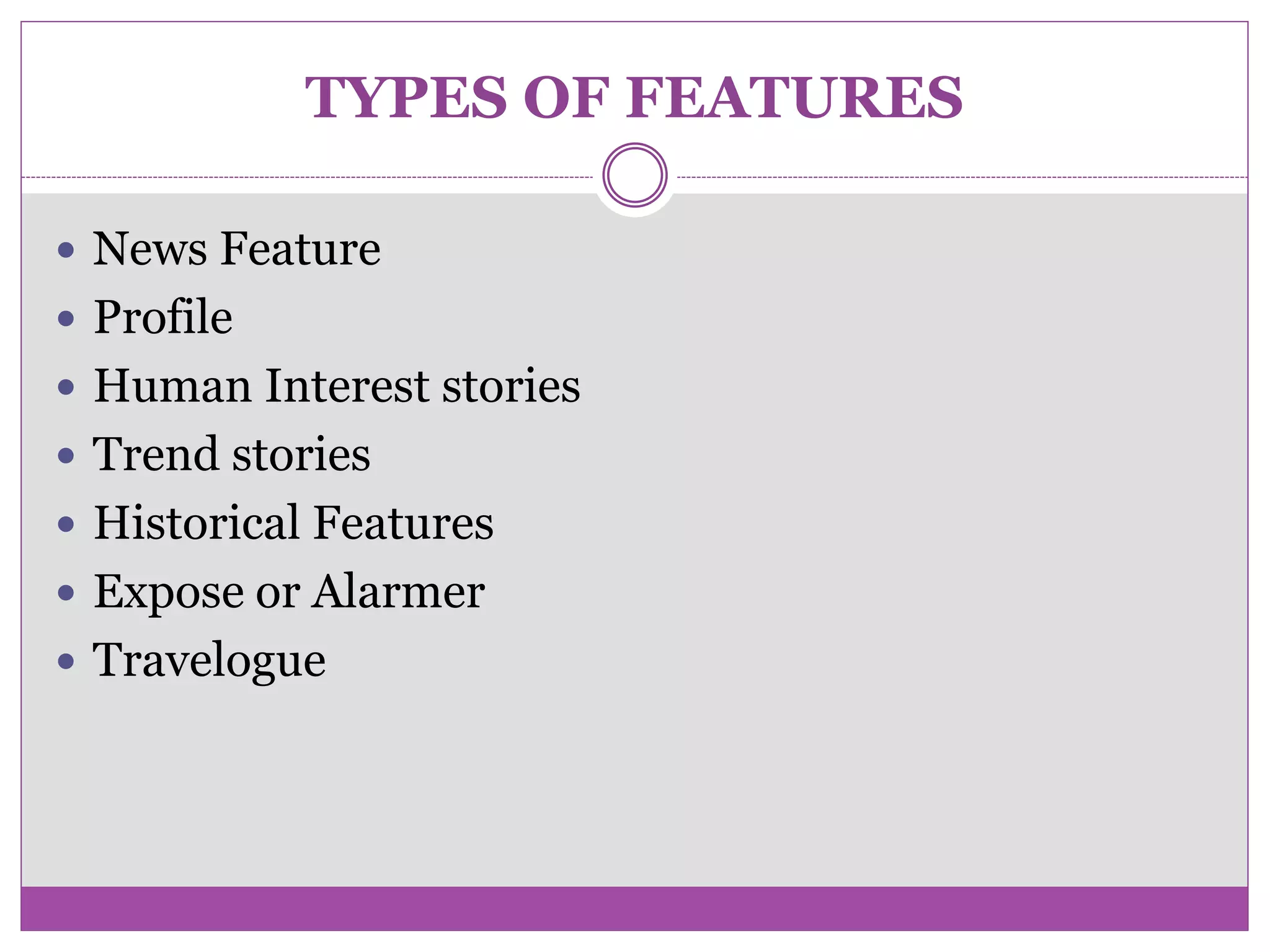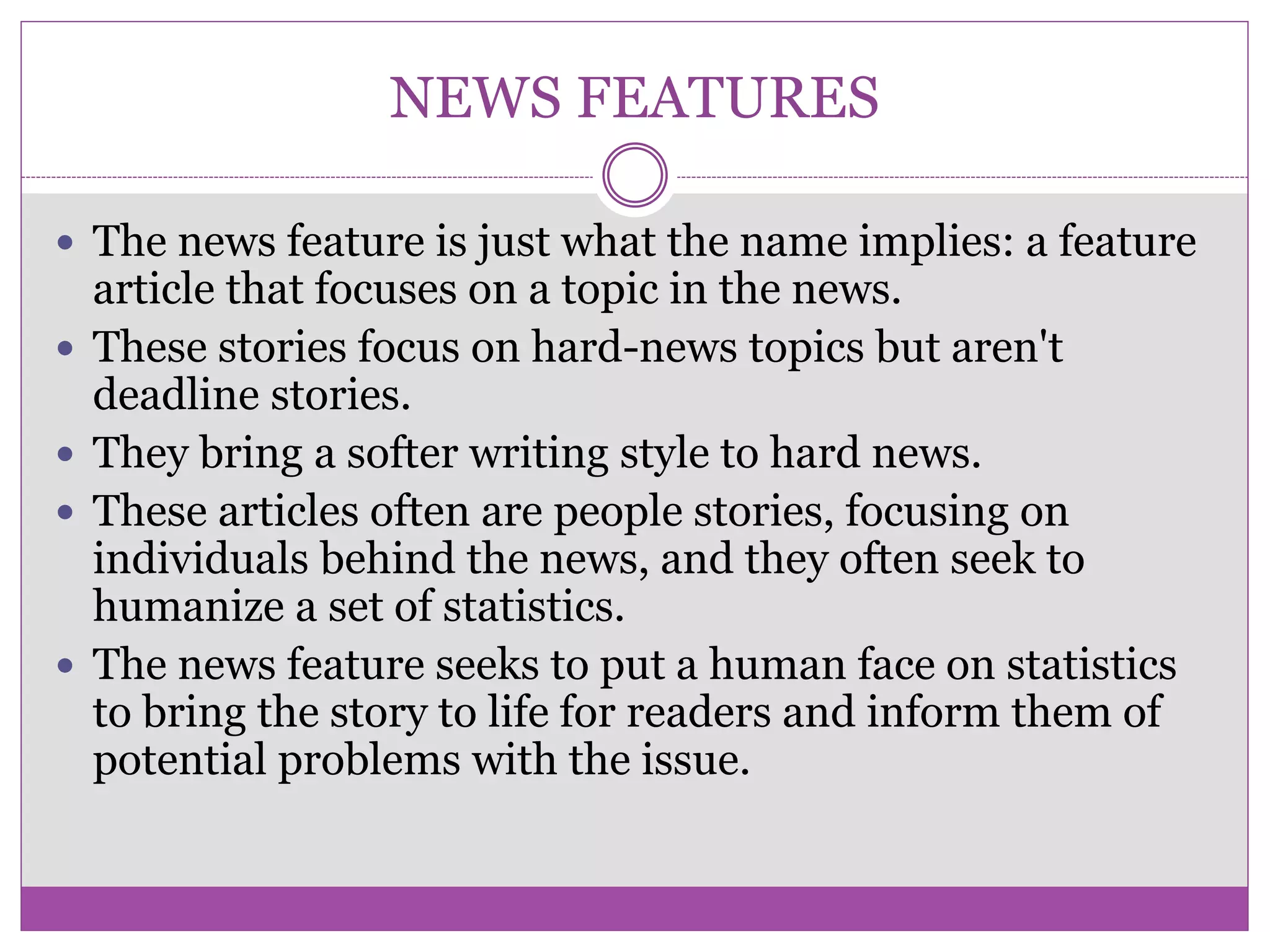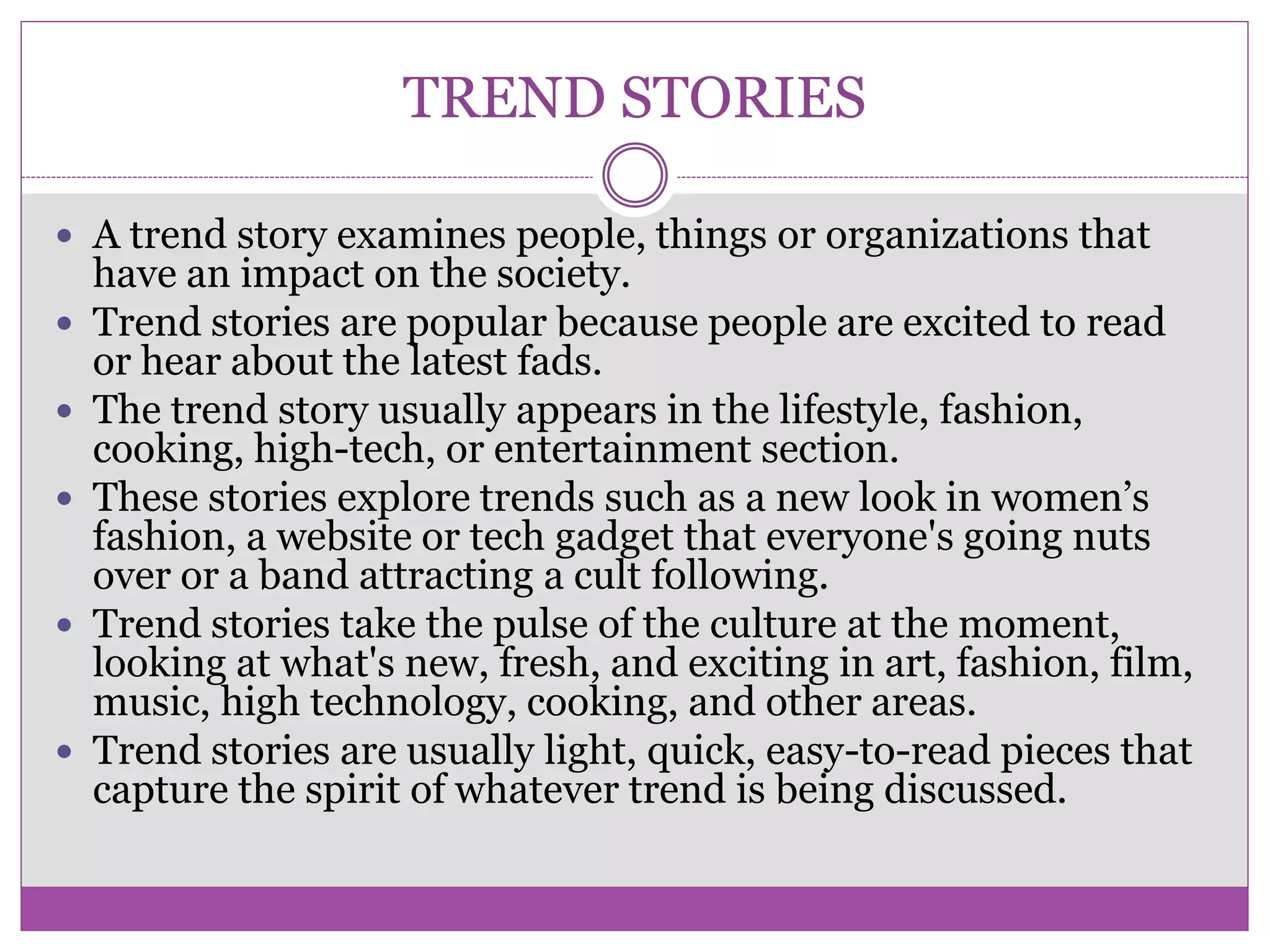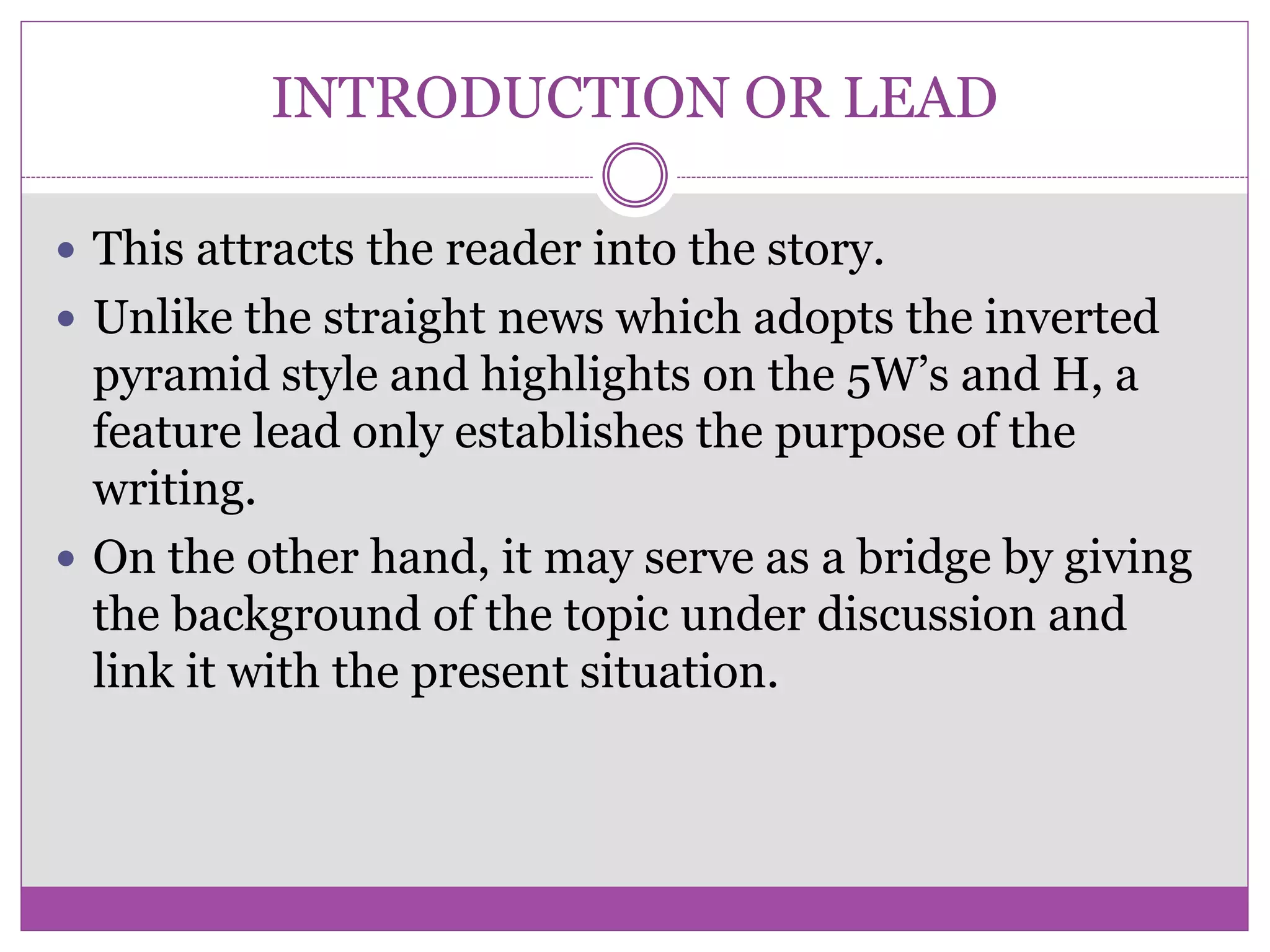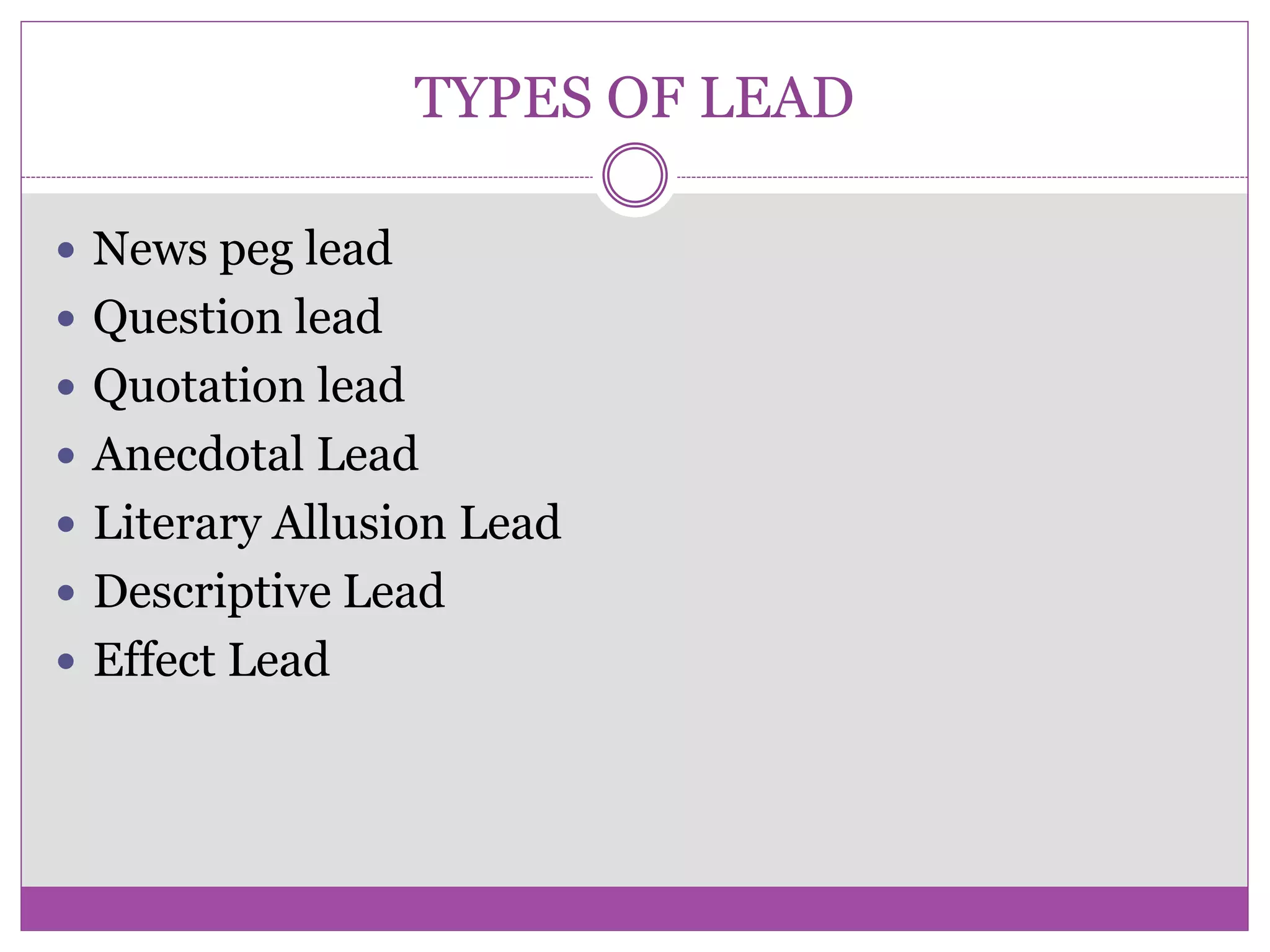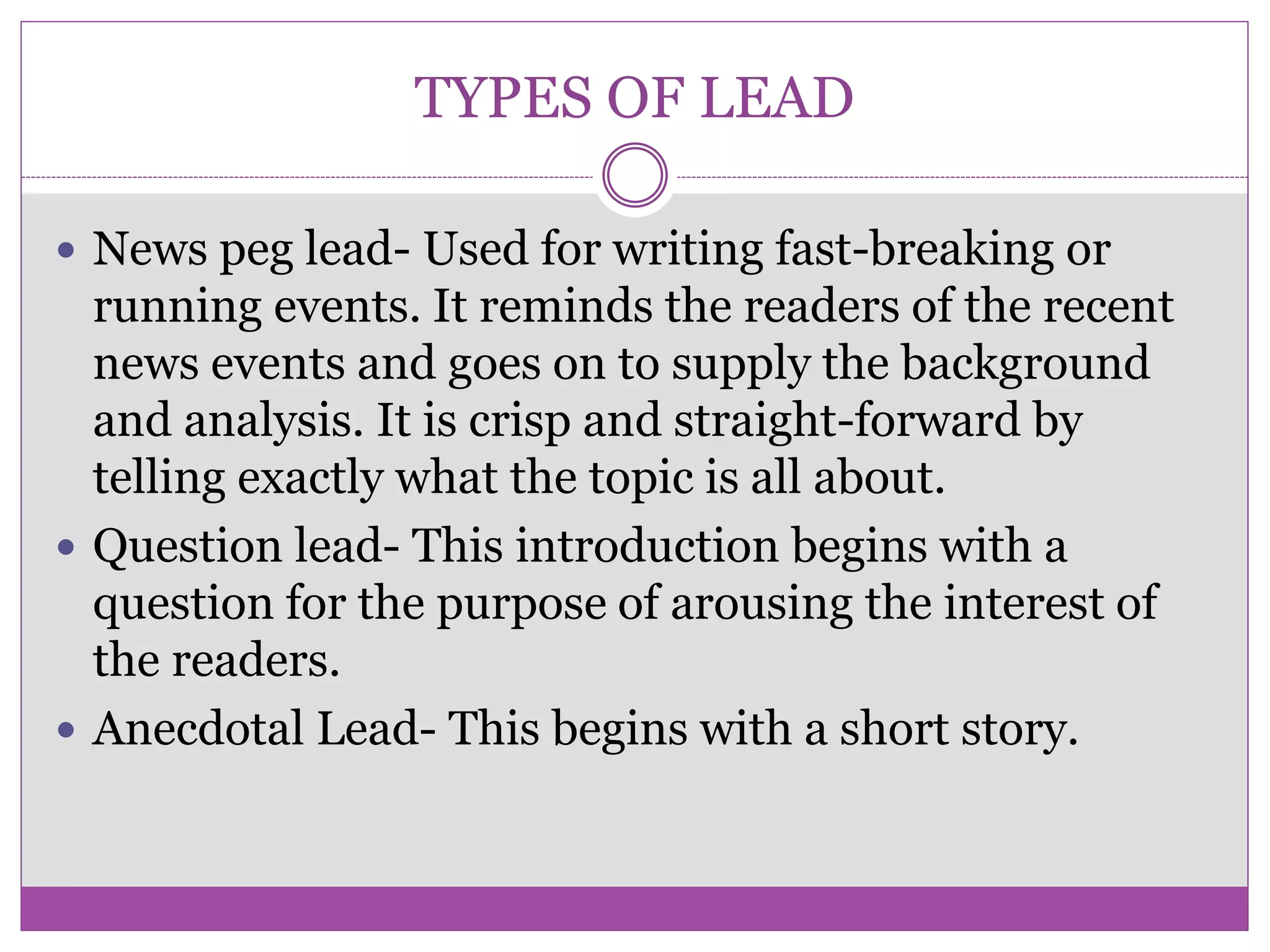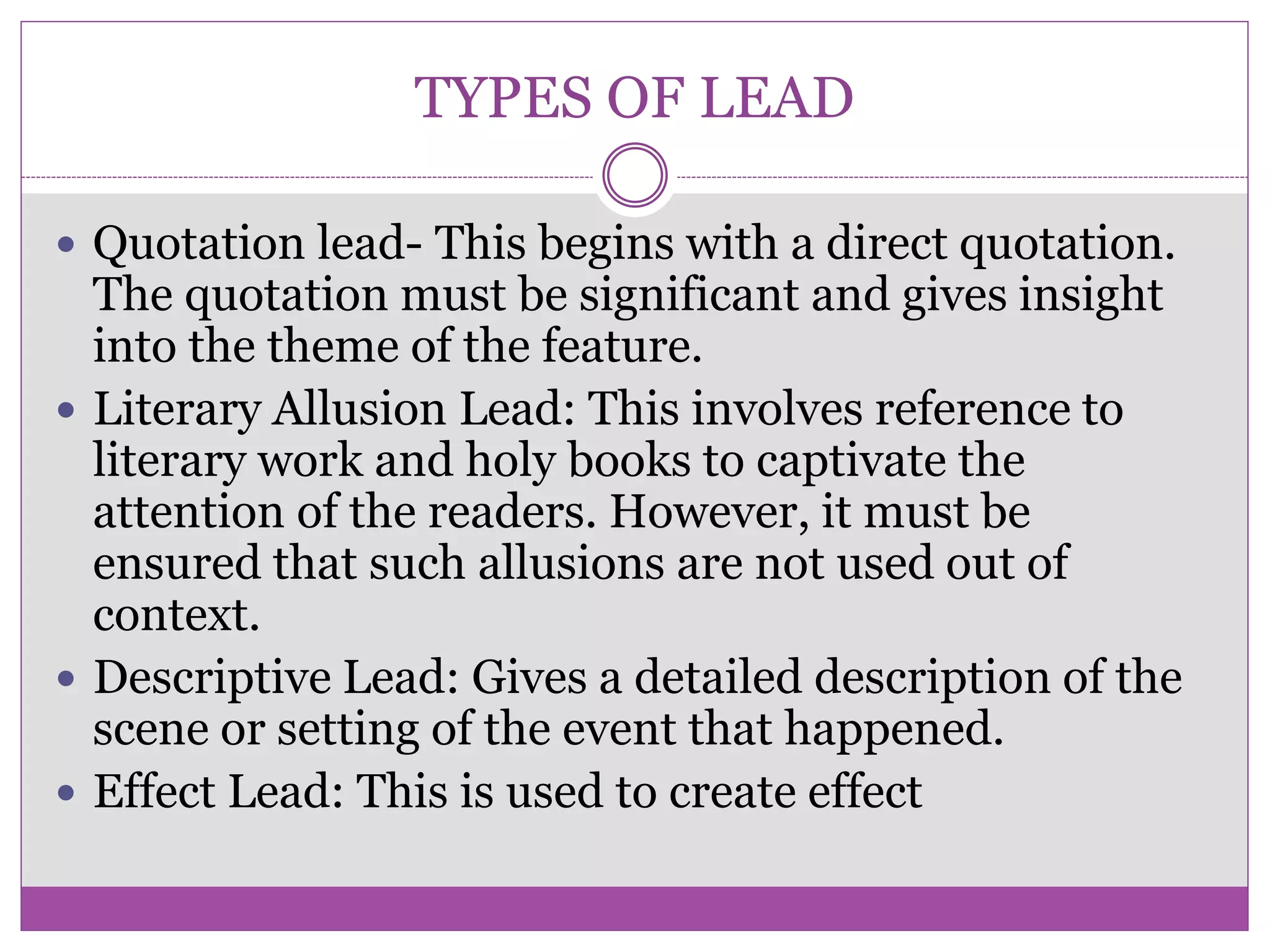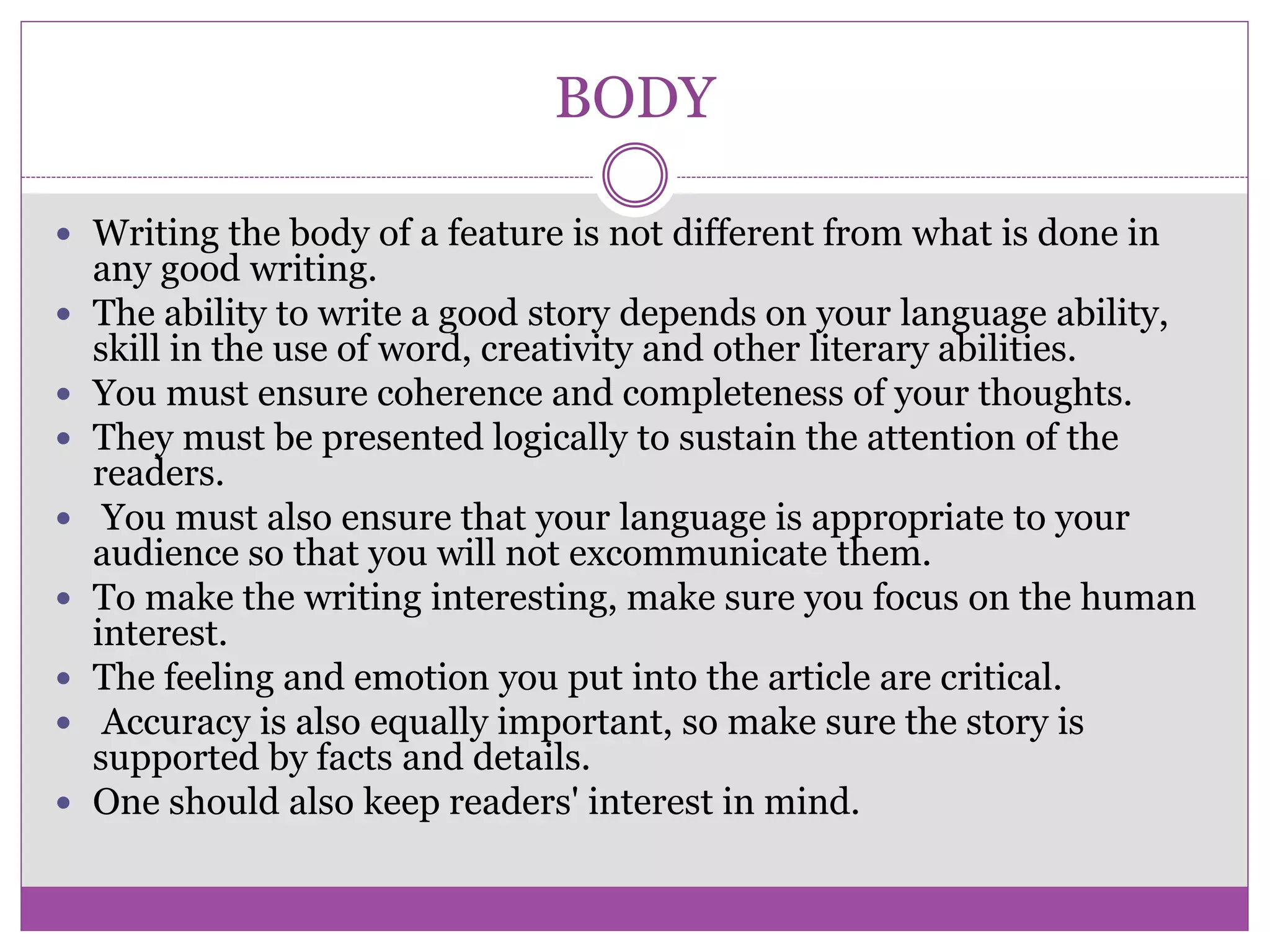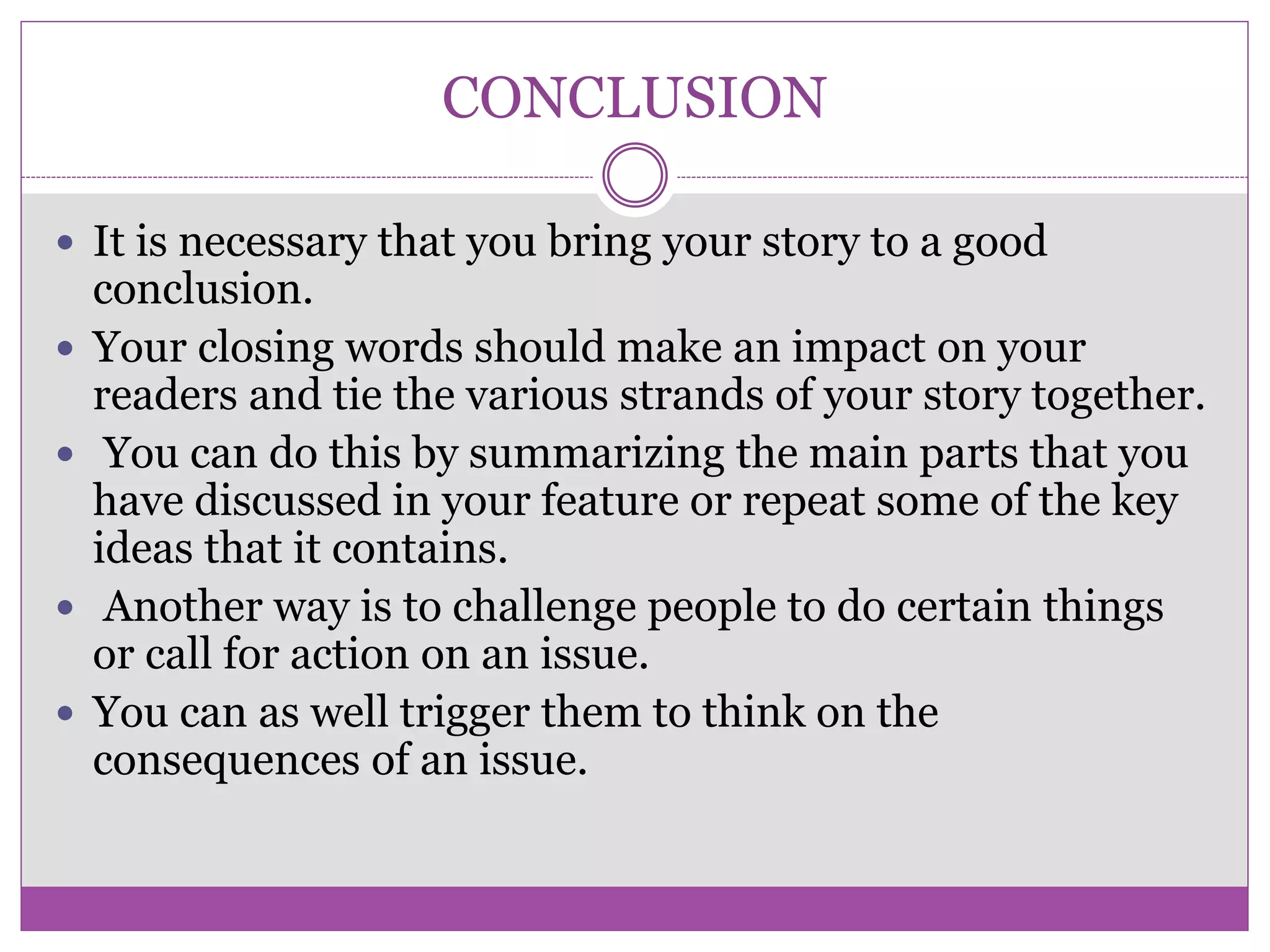The document discusses the types and process of writing feature stories. It defines features as in-depth, non-fiction stories that go beyond basic facts to provide context and human interest. The main types of features discussed are news features, profiles, human interest stories, trend stories, and historical features. The process of writing a feature involves finding a subject, establishing a theme, determining a style, gathering information through research and interviews, and writing an introduction, body and conclusion for the story. The body aims to sustain reader interest through a focus on human elements, accuracy, and logical presentation of ideas.




